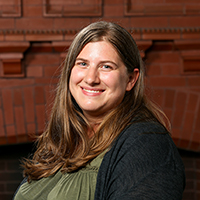Your research into ancient rare diseases is challenging the fields of bioarchaeology and paleopathology by rethinking the ways we define and conceptualize disease. Can you tell us about the stakes of this reorientation? Why is your project so necessary at the present time?
Bioarchaeologists and paleopathologists [1], work with a slightly more specific conception of disease than laypeople. The everyday usage of disease is frequently synonymous with infection; but the medical definition offered by Merriam-Webster centers around “an impairment of the normal state of the living animal or plant body or one of its parts that interrupts or modifies the performance of the vital functions.” This disruption is made obvious by signs and symptoms observed by medical professionals, and by bioarchaeologists and paleopathologists examining an individual’s bones. As bioarchaeologists and paleopathologists are limited to the bony changes that signal a response to a disease, most conclusions identifying the disease are just estimations or assumptions, as many diseases cause similar responses in the skeleton.
Instead of chasing the proverbial rainbow or aiming to solve the mystery of the disease, my research shifts the focus from the disease to the individual who once lived and breathed. I aim to explore the individual’s life experiences and how they interacted within their social and physical environments while living with the manifestations of a disease. By rethinking how we engage with disease in the past, we can illuminate the lifeways of people and how they lived with disease, rather than caring only about the identification of the disease. With this new focus, we can uncover universal and longstanding experiences of disease and disability, highlighting how anyone and everyone experiences at least momentary limitations during their lives, and thus effectively humanize modern marginalized communities.
I aim to bring together the life experiences of those with rare diseases in the past and the present. While individual diseases are rare, the total number of modern people experiencing rare diseases in the US and Europe is in the millions, since as many as 7,000 rare diseases have been identified. As bioarchaeologists produce evidence of these diseases in the past, a new stakeholder emerges: the modern rare disease community. Bioarchaeologists and paleopathologists should use frameworks and conceptions of disease that expand our focus to include the lived experiences and social identities of their cultural antecedents. By exploring the perceptions, attitudes, and experiences in different historical and social contexts, we have the opportunity not only to raise awareness and advance contemporary perspectives on impairment and disability, but to contribute directly to the rare disease community, using the past to provide essential insight on possibilities in the future.
Your time at Brown studying rare diseases happens to be coinciding — right now — with a very new and virulent disease spreading across the entire globe. Has your project given you a perspective upon the current global health crisis that is not being represented in other quarters? How is your research helping you to understand the pandemic?
Bioarchaeologists pose research questions that aim to understand the impacts of disease in different environments and time periods, and among different social groups or strata. Individuals with different occupations or social roles in the past would have been exposed to different diseases and/or have had diverse disease experiences (through such variations in living environment as the palace versus the densely-packed residential area). Such elements in understanding past disease experiences must be a component of how we approach and react to the COVID-19 pandemic; physical and social environments shape how our bodies are exposed to disease and how the disease is manifested in the body.
